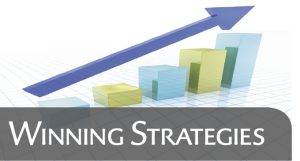JUST IMAGINE: ENVISIONING,
EMBRACING THE POSSIBILITIES
FOR YOUR AGENCY
Use this thought-provoking exercise to
picture your best version possible
By Roger Sitkins
Motivational speaker Steve Gilliland once noted, “Without vision, you have no direction. Without direction, you have no purpose.” I agree. I also believe that vision begins with clarity. As you look ahead, do you have a clear vision of where you want your agency to be?
I’d like to challenge you to gain clarity on your long-term vision (LTV) for your agency. Why is this important? As I’ve written before, clarity answers a number of critical questions:
- Where is my agency today and what is its current business model?
- Where do I want it to be in the next three to five years and what is its new or refined business model?
- How will I get there and what additional resources do I need?
When we guide our private clients through the planning process, the goal is to develop specific strategies and behaviors that when executed create predictable and guaranteed success for the agency.
In a fun and thought-provoking exercise, we ask team members to “just imagine” the best version possible of their agency. Essentially, we’re asking them to envision what their agency could become if there were no obstacles and if everyone was held accountable to do what they said they were going to do.
Often when we conduct these brainstorming sessions, we’ll give each team member their own color of Post-it notes, on which they list everything they’d like to see happen within their agency (relative to their function and the agency overall). Participants are encouraged to write down as many ideas as they can come up with individually, without discussion.
At the end of the exercise, team members share their ideas on what they would do if there were no limitations or obstacles to overcome. Usually, we’ll notice some recurring themes that form a foundation for us to work with.
While the results of this brainstorming session may sound like a wish list, many of the ideas and goals are not only practical, but entirely attainable. For example, “It would be great if all of our producers spent 80% of their time in The Green Zone,” or “Wouldn’t it be great if our employees actually followed the processes we have in place?”
There’s an endless list of other strategic ideas agency leaders would implement if they believed they couldn’t fail. I’ve compiled a list of some of the most common things that agency leaders “just imagine.” All of them pose the question, “What has to happen for (fill in the blank) to happen?” These form a solid foundation for your agency’s Best Version Possible plan (i.e., your LTV).
Are you willing to take proactive steps to become your just-imagined agency, or are you going to
sit back and wait to see what happens?
Imagine the possibilities
Have you ever daydreamed about your perfect world and wondered, “What if I could do (fill in the blank)?” That’s great, but then what must you do to make it happen? In doing this Just Imagine exercise, you’re starting with the end in mind. You’re envisioning the agency in three to five years, and then looking back to see what you need to do to accomplish that. The average agency doesn’t do that. The average agency has a fear of the unknown, which keeps it from changing the beliefs and behaviors that are holding it back.
Play along with me and see how closely your Just Imagines align with your Realities. If there’s a huge gap between them, there’s a problem.
Just Imagine if 100% of your producers met or exceeded their annual sales goals. In the average agency, fewer than 50% of producers hit their goals. Where are you? What has to happen for every producer in your agency to hit their goals? Among other things, you’d have to: do a better job of planning; schedule sales improvement meetings consistently; have in place Reverse Performance Management; and you’d have to hold people accountable to do what they said they were going to do. The average agency doesn’t do many of these things.
Just Imagine having a “set offense.” As you know, this is your agency’s unique selling process (USP) that differentiates you and your agency in your marketplace or niche markets. The average agency doesn’t have a USP, other than look, copy, quote and pray.
Just Imagine using the power of the 80/20 Rule to maximize results by replicating the top 20% of accounts through a referral process that works 80% of the time. Just imagine how great it would be to have the top 20% of your customers that generate 80% of your revenue give you a referral to new top 20s. The average agency receives a small number of reactive referrals, but overall, fewer than 10% of their customers actually refer.
Just Imagine becoming a referral-only selling machine, whereby 80% of your new business is written from referrals. “Every/Every” is the mindset. This means that every new client comes from a referral, and every new client gives you a referral. That’s not how it is for the average agency, which gets less than 10% of new business from referrals.
Just Imagine not allowing profitable accounts to subsidize unprofitable accounts. The average agency doesn’t look at this because, overall, they’re making an excellent profit. They don’t realize that a high percentage of their customers are not profitable.
Just Imagine having full-time clients only, where you handle 100% of your client’s insurance and risk management needs. Wouldn’t that be fantastic? It can be done, although not at the average agency, where approximately 50% of their clients are part-time clients. The result is low revenue per relationship and decreased retention.
Just Imagine your producers spending 80% of their time in the Green Zone doing just four main activities: sales, relationship management, continuation process and pipeline building. However, the average agency has producers in the service trap (the Red Zone) 80% of the time. Thus, they have part-time producers only.
Just Imagine dramatically improved service capacity. The need to retain and attract great team members in the service area is the main concern I hear from agency principles. Increasingly, as agencies are having to do more with less, they’ve had to boost the capacity(productivity) of their service team members. But the key to enhancing capacity isn’t about hiring more people. Rather, it is driven by streamlined and proven processes that are documented, taught through training, constantly reinforced, and consistently embraced by all.
Conversely, the average agency has multiple versions for all major processes with no consistency or identification of their internal best practices. There is no “agency’s way” of doing business. And when everyone has a different way of doing things, there’s no way you can increase capacity or improve the productivity of the team.
Just Imagine maximizing your agency automation and technology systems. Simply put, imagine making the most of the systems your agency already has. The average agency utilizes less than 50% of its available systems. That’s like having a new iPhone and still taking Polaroid pictures when you’re on a family vacation.
Just Imagine earning an operating profit of 30% and then adding another 10% of contingency income. Pretty nice, right? The average agency has good profitability, but too great a percentage from contingency income, which is totally unpredictable and belies true organic growth.
Just Imagine having a minimum account size and a targeted account size in all departments, thereby greatly improving your revenue per relationship, as well as your profits. However, the average agency says that every account is a great account! Are they order-taking on accounts that don’t come close to qualifying for their minimum account size? Writing a large number of accounts isn’t good business if you’re losing—not making—money on them.
Just Imagine a totally aligned team focused on a common goal, and whose members appreciate and respect every-one’s roles. In our BVP model, the common goal is to retain and obtain ideal clients. The average agency does not have a common goal; their sales and service people simply show up and “make the donuts.” Not only are they not engaged with their team members, they’re on autopilot, mindlessly performing tasks.
The bottom line
If you don’t have any of the above in place, you’re an average agency. That’s fine if you choose to be average and want to operate a lifestyle agency. But if you believe that Best Version Possible is out there waiting for you, these are the things you should attack in your agency.
There is a big concern about continued inflation and a pending recession. Are you willing to take proactive steps to become your just-imagined agency, or are you going to sit back and wait to see what happens? By doing the latter, you’re taking a huge financial risk. As you know, past performance is no guarantee of future success. Just because you’ve always done well in the past doesn’t mean you’ll do well moving forward.
Just imagine what your agency could become if you were proactive and dared to venture outside of your comfort zone. The best agencies embrace the possibilities, despite the initial discomfort. It’s very exciting when you do! Are you willing to do what it takes to become your agency’s Best Version Possible for 2023 and beyond? It’s your choice.
The author
Roger Sitkins is the CEO of Sitkins Group, Inc. After over 40 years he has truly become an icon in the insurance industry having trained and mentored thousands of insurance professionals.
Roger was inducted into the Michigan Insurance Hall of Fame in 2017 and in that same year also received the Dr. Henry C. Martin Award from Rough Notes magazine. Roger is among only six people to have the honor of receiving this prestigious award.
Recognized as the nation’s top insurance agency results coach and renowned leader for improvement, he believes that if you improve the life of one person, you improve the world. To learn more, visit www.sitkins.com.






